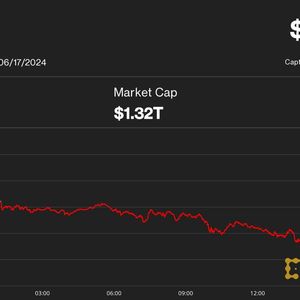

Basic Pattern Recognition Makes You A Bitcoin Bull
Summary Bitcoin has shown a clear pattern of 4-year cycles, with 3 years of growth followed by 1 year of decline. This pattern has repeated 3 times in BTC history. Value investing and all other investing philosophies are simply subsets of pattern recognition, because you could not develop the philosophy without recognizing its patterns. To deny pattern recognition as a basis for an investment because it violates or goes against a subset of pattern recognition (value investing, etc.) is a logic fail. The more undeniable the pattern becomes, the more the market prices it in, and the lower the future return will be. This is the basis for the "diminishing returns" theory in crypto, which is that every cycle will produce a lower % return than the last one. The 4-year cycle is not priced in. Most people are either unaware, think it will not repeat, or think that other tools like technical analysis are more relevant than just looking at where we are in the cycle. Evident Cyclicality Running in 4-Year Cycles, with 3 Years Green, Followed by 1 Year Red The Bitcoin (BTC-USD) four-year cycle theory is being further substantiated with every 4 years that passes. We have had 3 clear 4-year cycles following the same pattern of 3 years up, followed by year down, since 2011. See annual returns for the 4-year periods of 2011-2014, 2015-2018, and 2019-2023 below. Bitcoin Returns by Calendar Year Year Return 2011 1467% 2012 187% 2013 5870% 2014 -61% 2015 35% 2016 124% 2017 1338% 2018 -73% 2019 94% 2020 302% 2021 60% 2022 -64% 2023 YTD 75% Source: Bankrate Bitcoin Price History Pattern recognition is essential for success in almost all human endeavors, including investing. Sir John Templeton once famously said "the four most dangerous words in investing are, it's different this time." The pattern in the historical annual price data is clear, and the burden of proof is on the bears to explain why this 12-year pattern would be break down this time. Bitcoin and other cryptocurrencies would not be in my wheelhouse as a value investor, but there is no other asset class with such an undeniably clear pattern in its price movement. All Investment Philosophies Are Built on Pattern Recognition Many value investors object to Bitcoin on the basis that it does not produce a cash flow today and will never produce a cash flow. On this basis you must also reject investments in all commodities, watches, cars, art, housing for your primary residence, and land. If you have a problem with these, perhaps have a word with every bank that has a commodity trading floor. What many investors fail to recognize is that value investing, growth investing, special situations investing, arbitrage, passive index fund investing, and all other forms of investing are simply subsets of pattern recognition. You buy undervalued stocks because you or somebody else recognized that stocks have a pattern of reverting to cash flow multiples or other earnings multiples that are similar to those of their peers. You buy the S&P 500 index because you recognized that although it fluctuates, there has been a sustained pattern of 10% average nominal returns. You buy growth stocks because you recognized a pattern of big names that grew revenue and net income very quickly, and delivered outsized returns (Tesla, META, Google, Netflix, SHOP, etc.). To deny pattern recognition as a basis for an investment because it violates or goes against a subset of pattern recognition (value investing, etc.) is a logic fail. Value investing could not exist without groups of people identifying patterns that led to the creation of the value investing philosophy. To deny pattern recognition as a basis for an investment is to deny value investing itself and all other investing philosophies. Is There Enough Data to Confirm that the Pattern will Continue in the Future? If you recognize that there is a clear 4-year pattern in the price movement of Bitcoin, and that pattern recognition is a sufficient reason to warrant an investment, you might still say that three 4-year cycles over 12 years is not enough data to indicate that the pattern will continue into the future. This is a fair point, but the problem is that the more clear and undeniable the pattern becomes, the more the market prices it in, and the lower the return will be. This is the basis for the "diminishing returns" theory in crypto, which is that every cycle will produce a lower % return than the last one. This theory has been true across all 3 cycles so far. If you invested in 2011, you had no annual price data to base a pattern in, and your risk was the highest. As such, you gained the % returns over the first cycle. If you waited until the beginning of 2015, you had one 4-year cycle behind you, but there is no world in which you could call a sequence of one cycle a pattern. You wouldn't even be able to describe it as a "cycle." If you waited until the beginning of 2019, you now had two 4-year cycles behind you, and while it's not enough to be certain, you had enough data to form a theory. Your gains for holding from 2019 to the end of 2021 were much lower than those of somebody who held from 2015 to the end of 2017, because you had more information and your risk was lower. If you are still not invested and waited until 2023, you now have three 4-year cycles behind you. It's still not enough to be certain, but you wouldn't be certain with four or five 4-year cycles either. If you keep waiting until the point that you reach certainty or near certainty, your upside will be capped accordingly. And ironically, by the time everybody is certain the cycles will continue, that is when the market has priced the cycles in, which is when the cycles will cease to exist. Halving and 4-Year Cycles are Not Priced in The rationale for the halving and 4-year cycles not being priced in are quite simple. Firstly, you still have tons of people using technical analysis as a tool to tell whether or not to be bullish or bearish on Bitcoin, as if technical analysis has any use at all compared to just looking at where we are in the cycle. Secondly, we know that the market does not accept the 4-year cycle theory as fact yet. If it did, nobody would have sell ratings on Bitcoin at this point in the cycle, and nobody in the comment section of this article or other Bitcoin articles would have bearish comments. Some might say we are up 75% YTD; isn't that the market pricing in the halving? If we look at returns of pre-halving years in previous cycles, being up 75% would not indicate the halving being priced in. BTC was up 35% in pre-halving year 2015 and up 94% in pre-halving year 2019, and in both occasions BTC went up over 100% in the following halving year. What's Different this Cycle: Bitcoin ETF Filings Every time somebody has called for a cycle to be different from the last ones, they have been wrong. So I am not going to be one of those geniuses who calls for some "super-cycle" that extends into 2026 and beyond. Incoming institutional demand was a narrative in the peak of the last cycle, but now it is clear that institutions are interested and willing to participate and bring demand to the market. There has been news of the recent various BTC ETF applications from BlackRock, WisdomTree, Fidelity, Invesco, Valkyrie Investments, Ark Invest, and VanEck. The Bitcoin story remains the same. Demand is increasing over the years as the younger generation gains more financial resources and allocates it to their asset class of choice, while supply remains stable. Institutions are entering, not exiting. It's Very Difficult for a Commodity to go to Zero Bitcoin bears and critics often say that Bitcoin is worthless, and "going to zero." This is also sometimes repeated by some Bitcoin bulls like Chamath Palihapitiya, who say that Bitcoin is a binary investment that either goes to millions of dollars or to zero. The reality is it's much easier for an equity or a currency to go to zero or near zero than it is for Bitcoin or another commodity. With a currency, you have consistent inflation and debasement that sends the currency to near zero over the super-long term. With equities, you have the possibility of bankruptcy which can suddenly wipe out equity holders and certain levels of bond-holders. COVID-19 put a serious strain on the cryptocurrency narrative that it was a hedge against the traditional financial system. How could it be if the asset class fell many times harder than the stock market? If COVID couldn't send Bitcoin to zero, then I can't see what the catalyst to zero would be. What Would Change my Outlook There is a risk that the 4-year cycles break down or do not continue into the future. Since the bull thesis is based on taking advantage of the clear pattern and its predictability of timing of returns, a breakdown in the pattern would cause me to re-evaluate my thesis. If either 2023, 2024, or 2025 ends up being a down year, this would be a break in the pattern of 4-year cycles. A Final Word I do not hold Bitcoin directly; you can read more about my type of preferred cryptocurrency investment vehicle in my previous article on Grayscale Bitcoin Trust (GBTC), which trades at a discount to NAV (net asset value). There are other cryptocurrency funds/trusts that trade at substantially higher discounts that I hold in my portfolio, that I will write about in future articles. I have also recently moved to Puerto Rico to take advantage of its 0% capital gains tax rate on equities and cryptocurrencies as a part of the Act 60 program. The crypto community is quite strong here and is similar to the one in Miami. I would advise crypto investors expecting significant gains in the projected 2024 and 2025 bull market to speak with tax professionals to see if the program makes sense for you.













